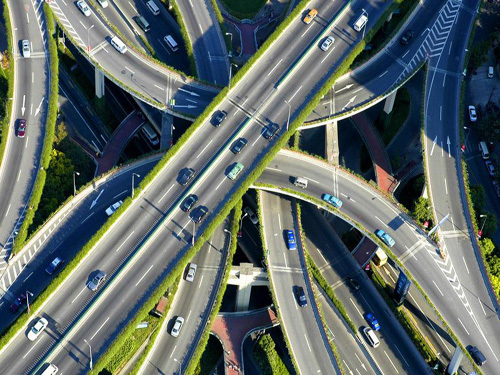
The "symptoms" caused by the accelerated development of urbanization, such as population expansion, traffic congestion, environmental deterioration, and resource constraints, are plaguing many cities in China. Stones from other hills, can learn. Many neighboring countries are also faced with the same "problem." South Korea's modernization process was earlier than China and there have been many effective explorations in the governance of "megacities."
In order to promote the development of ITS, South Korea passed the Intelligent Transport System Efficiency Act in the early years. In recent years, South Korea has implemented a series of pilot projects, especially the electronic toll system for expressways and intelligent nationwide highway projects. At the same time, Korea has also established various service infrastructures to provide the public with a convenient public transportation payment system. For example, the bus card system. At present, the Korean Ministry of Construction and Transportation has been promoting a timely traffic system with the aim of integrating traffic information and providing real-time information services for public travel. The intelligent transportation technologies in Korea are mainly piloted and used in Seoul, the capital of Seoul. Both intelligent traffic management and related smart technologies are worth learning and learning from.
Since the 1990s, Seoul’s population has been constantly increasing, which in turn has led to new transportation needs and cities have been unable to meet the increasing traffic demand. With the changes in the modes of transportation, the use of private cars is increasing, and it has become very difficult to effectively organize various bus lines and operations. The bus was once the most widely used mode of transportation, but changes in the demographic structure have made it no longer. The traffic system is in a state of chaos, and reform is imminent. After a major rectification, what is the current traffic situation in South Korea?
At present, Seoul, the capital of South Korea, has an area of ​​only 605 square kilometers and a population of 10.45 million. It is still a city with a high density of individuals. However, in Seoul today, there is no traffic jam. What is the mystery? The Seoul Metropolitan Transportation Information Center (TOPIS) on the third basement of the new office building of the Seoul Metropolitan Government found some answers.
According to Yang Yungui, director of Seoul Metropolitan Traffic and Traffic Information Center, the center currently has 90 staff members in 4 groups and monitors and intelligentizes traffic and disaster conditions 24 hours a day. It is understood that Seoul’s public transport system was also suffering from road congestion, backward operation and management systems and complex network confusion 10 years ago. Yang Yungui said that the adjustment of the mass transit system in Seoul began in 2004. At the time, all lines were re-planned and set up to achieve convenient service. If the entire metropolitan area public transit network is divided into regions, all vehicles are painted with red, yellow, green, blue, and other body colors according to the operation lines, which are easy to identify. The blue car refers to the main line and the urban cross-regional route that runs on main roads and public traffic lanes and connects the regional centers in Seoul. The green car represents a branch line and transports passengers to the main line and subway stations. The red car is a suburban express line that connects Seoul with the satellite cities. The yellow car means the inner ring line in the city and operates within the urban inner ring road.
In addition, in order to achieve public transportation priority, Seoul City re-established bus lanes. The BRT dedicated lane was moved to the center of the road, and the station was also located at the center of the road, thus avoiding the congestion caused by the crossing of bus entrances and exits with social vehicles. Through the satellite positioning system installed on more than 8,000 buses in Seoul, the center can also monitor the bus's position, speed, arrival time, and vehicle separation in real time. According to the real-time traffic conditions, buses can be flexibly deployed and bus service information can be released in a timely manner. Passengers can also check bus arrival time in real-time via APP software and select the most time-saving route. In order to achieve rapid commuting, Seoul City has not only built and perfected the access routes for ground buses and subway lines, but also provided public bicycles to provide conditions for citizens to abandon the transfer of private cars to public transport.
Head Lamp,Rechargeable Head Lamp,LED Head Lamp,USB Rechargeable LED Head Light
Yuyao Flylit Appliance Co.,Ltd , https://www.yyflylit.com